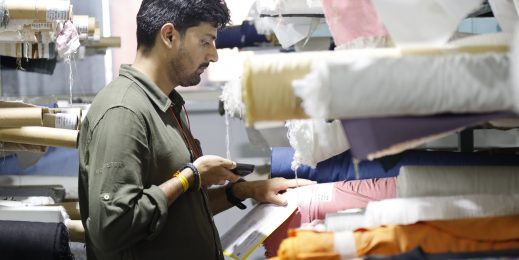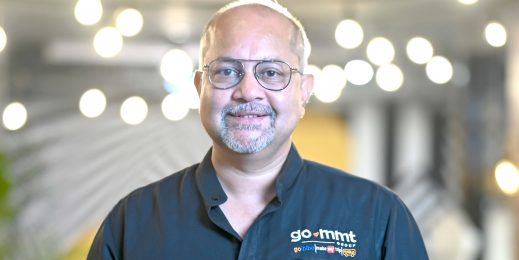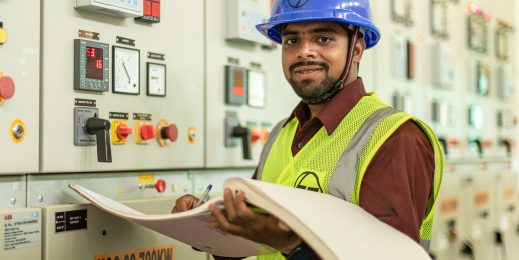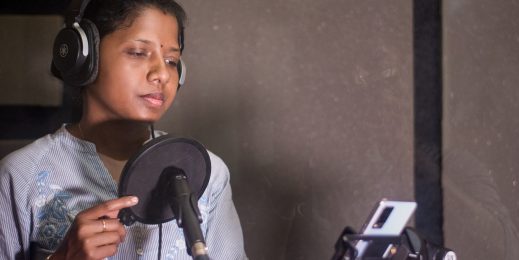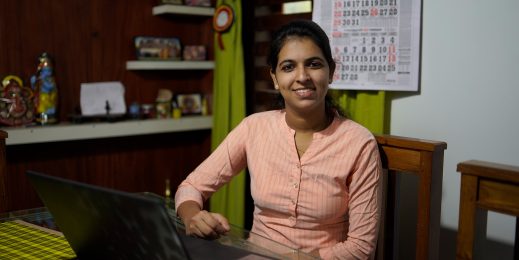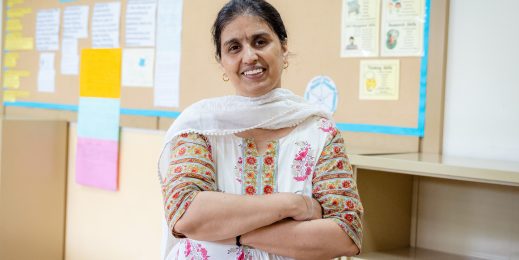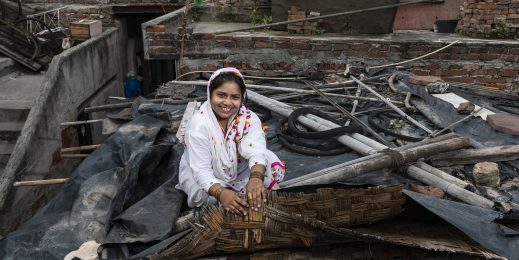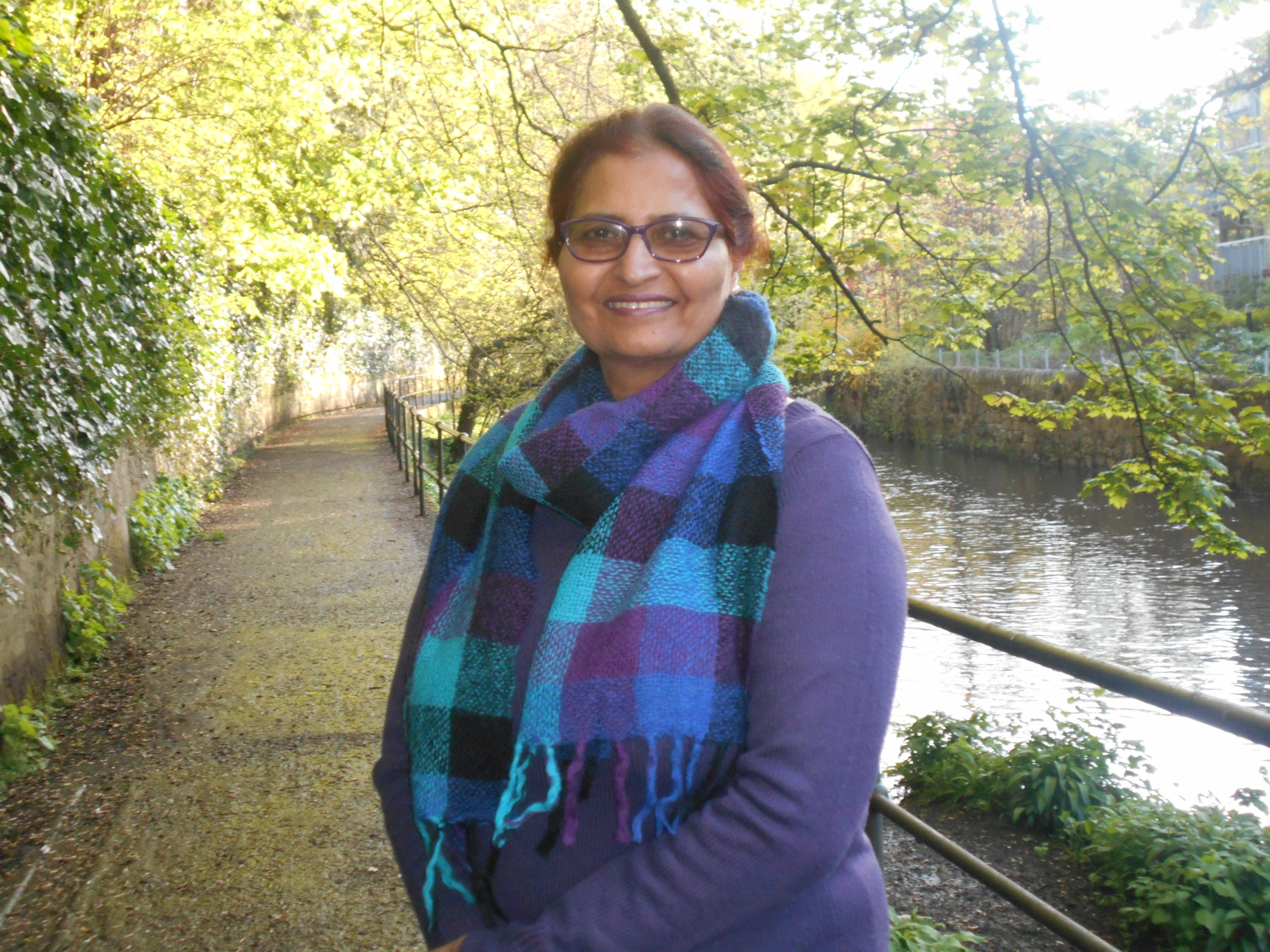
Going virtual in the village
How Paramjeet Kaur Dhillon, the principal of a rural school in Punjab, is encouraging both teachers and students to dream big with technology.
At the Kamla Nehru Public School (KNPS) in Punjab’s Chak Hakim village, the teachers all tend to wear sports shoes. “Forget about fancy footwear,” says Charu Chhabra, the vice principal, with a chuckle. “When you have a principal who likes to run everywhere, you have to keep up too.” She is talking about Paramjeet Kaur Dhillon, who has led the sprawling institution with about 1,600 students since its founding in April 2007, when it had just six rooms and a strength of 68. Dhillon’s zeal to keep pace with the changing times is infectious, say her colleagues, and it is what has allowed them to swiftly respond to the pandemic. Together, they designed and rolled out a remote learning program as early as April, well before schools in urban settings had even grasped the new reality.
For the moment, the principal’s famous speedy gait is limited to her home, but she stops by in the various virtual classrooms every day. Her students—who come from 65 farming villages around the city of Phagwara in Punjab—log in over smartphones, tablets, and laptops with recently upgraded internet data plans. Classes typically last for six hours and they are so engaging, says Satinder Kaur, mother of a Grade 6 student, that her son actually misses studying on weekends and holidays. Over e-mail and instant messaging, schools from Delhi and Pune have asked the first movers in online teaching to share their secrets.
Dhillon herself had never seen a desktop until the late 1980s when she was teaching physics at the MGN School in Jalandhar. Members of the staff who wished to operate the fascinating machine were asked to attend lessons after class hours, and Dhillon signed up promptly. For weeks, she would pack extra tiffin boxes for her two small children and set out on a moped to learn the fundamentals of computing. All evening and the next morning, algorithms and binary codes would run through her head. “I dreamed about computers,” she recalls. “I was always eager to update myself so that I could teach my students too.”
Little surprise then that information technology has been front and center of the curriculum at KNPS. Dhillon is often heard saying she does not want students to feel let down, as if she “only given them half a loaf”. As such, they evaluate themselves not only against peers in India but also the world. The school offers kindergarten to Grade 12 education and its students belong mostly to modest households. Several are first-generation learners. Their parents, while not highly literate, raise money abroad by working in factories or driving cabs. It lets them afford electronic devices and schooling for their offspring. “They want their children to have the things which they could not access growing up,” says the principal.
Fluency in the English language and technology are particularly valued by parents in this milieu. An attempt in 2014 to go from bags-to-laptops flopped as many did not have laptops. “We had tried so at least we knew how you fail,” Dhillon remembers. “Nothing can be made mandatory in a village school.” Through a partnership in 2015, KNPS became a Microsoft Showcase school. That is when a softer approach to integrated digital learning with the curriculum began in the form of bring-your-own-devices or BYOD. Some parents had apprehensions about introducing their wards to the Internet early on, but they came around after reassurances. Children shared devices and familiarized themselves with Microsoft’s learning tools such as OneNote for taking notes, Kahoot! for game-based learning, and Sway for making presentations.
The school offers kindergarten to Grade 12 education and its students belong mostly to modest households. Several are first-generation learners. Their parents, while not highly literate, raise money abroad by working in factories or driving cabs. It lets them afford electronic devices and schooling for their offspring. “They want their children to have the things which they could not access growing up,” says Dhillon.
So when the lockdown was imposed in India, they were not fazed by the challenge. Dhillon had already prepared the staff in December, as soon as reports emerged about the Coronavirus infections in China. By March, the teachers started training to use Microsoft Teams, their chosen platform for remote learning. Simultaneously, they structured lectures and delivered them to each other in mock sessions. To make things interesting, they helped each other come up with multiple-choice questions and polls to include in class. Changes were made along the way. They added office hours after each lesson to discuss doubts one-on-one. Some mathematics teachers, for instance, switched to using the Microsoft Whiteboard tool so their students could see them solving sums by hand.
All this took serious effort. The teachers’ working hours have risen from seven a day before the lockdown, to between 10 and 12 now. Like Dhillon, most of them did not grow up with technology but have embraced it fully. They describe their principal as being “visionary” and “far-sighted”. She often drops by virtual classrooms to enliven the proceedings, observes Sharda Pullabhatla, a coordinator and teacher at the school, encouraging them to “appreciate the students” or “unmute them” so there can be more interaction.
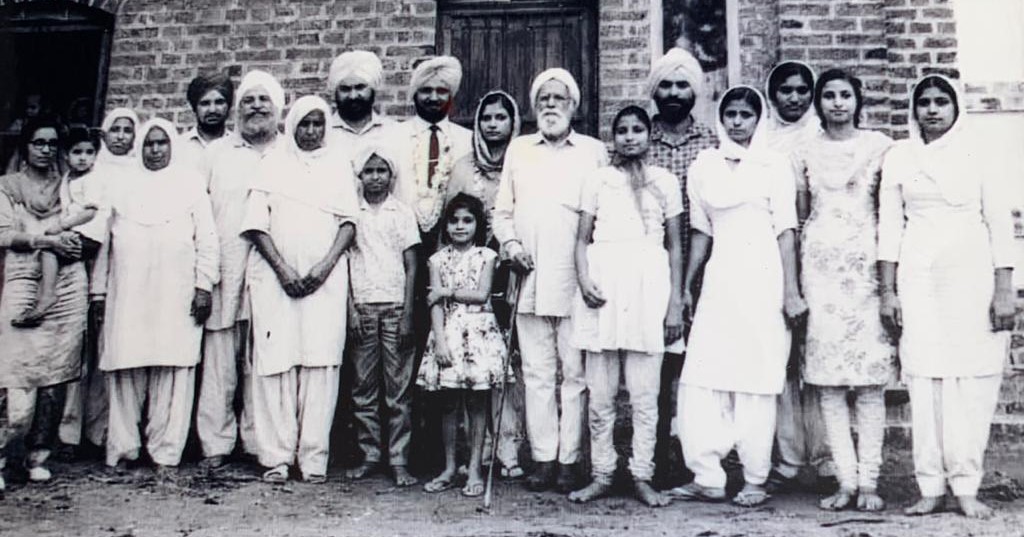
Dhillon’s conversations are peppered with catchphrases like “empowered educators lead to engaged classrooms” or “well begun is half done”. Her powers of persuasion helps keep all stakeholders—teachers, parents, and students—motivated. Signs of leadership were visible early on in her life. Dhillon was born in a family of six sisters and one brother. Her father, an army officer, and mother, who had no formal education, were keen on the children studying well. She was head girl at the St Joseph’s Convent School in Bhopal, and later, successfully contested elections to become the president of the Students’ Union at Bhopal University, even leading demonstrations for the liberation of Bangladesh.
She loved working with children from the start, tutoring the neighborhood’s little ones and taking them out on picnics. Her focus on all-round development of students is reflected in her own past too—she played national-level hockey in her mid-teens.
Parents and children alike have been adapting to the new normal. They have arranged for screens and Wi-Fi connections. “We can manage that expense since we are not spending on commuting right now,” reasons parent Satinder Kaur.
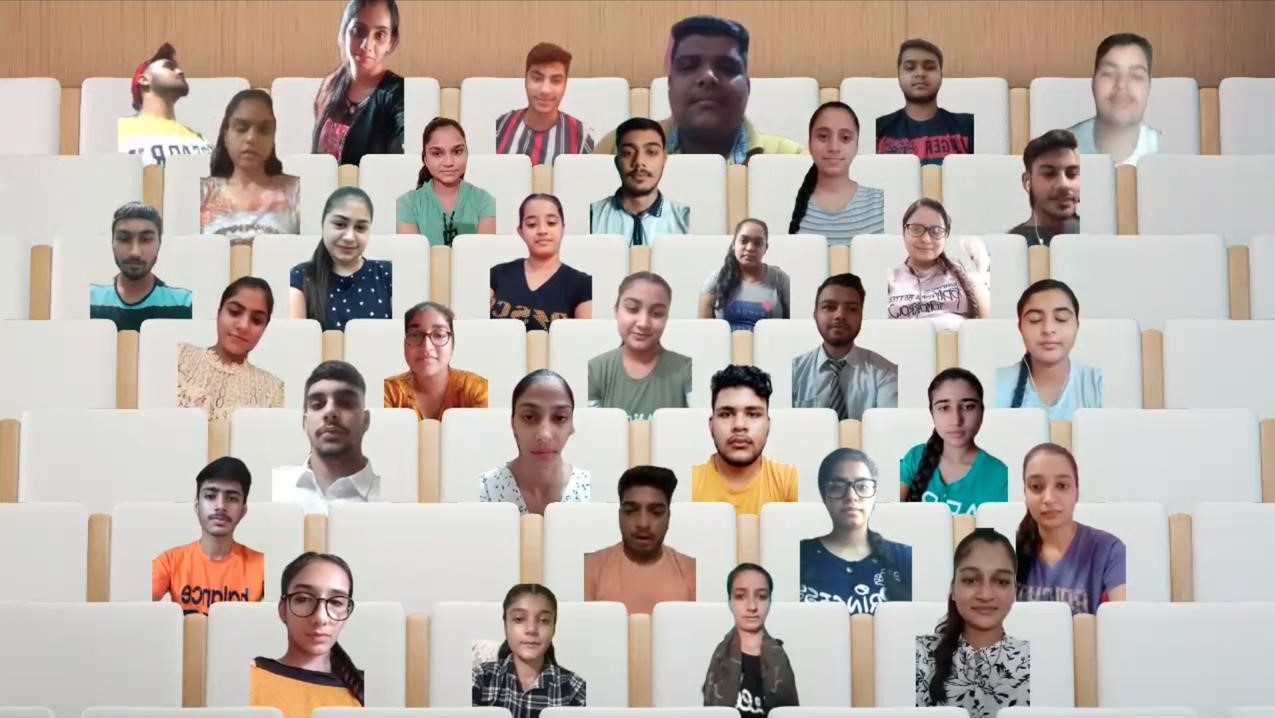
“Lots of children are aiming for foreign studies,” observes Gurmit Kaur, another mother. “Learning with technology gives them a solid base for that.” Her daughter Gurnoor Kaur, a Grade 12 student of commerce, finds the classes relaxed with a good mix of activities and breaks. There are of course some experiences that cannot be replaced. “I realize that this is the final year of school and I am away from my classmates,” she says, with a hint of nostalgia. The school is trying to compensate for this too using Teams app features such as “Together Mode” and “Large gallery” which offer an imitation of closeness.
On Dhillon’s advice, a “well-being” module was added too, where teachers ask students about their day or their other interests to take their mind off the separation and difficulties the pandemic has imposed.
The leaps and bounds in teacher empowerment over the last five months would otherwise have taken five years, reckons the principal. Things must be working out because 150 new students have signed up to pursue their Grade 11 education remotely at the school, a new record. As word of their success with remote learning spreads, Dhillon is convinced to carve even bigger plans for the future. “We could have branches now,” she says. “Why can’t we have a parallel virtual school also?”
Ranjita Ganesan is a journalist and researcher based in Mumbai.







